VELA is a world first: a sailing cargo ship with three hulls, designed specifically for freight transport and powered 100% by the wind. Inspired by offshore racing, it sets a new standard for low-carbon maritime logistics. But why choose a trimaran configuration? Here are 7 reasons why VELA is one of the most efficient vessels in sustainable shipping.
1. Innovation Inspired by Offshore Racing
Developed in partnership with VPLP Design and MerConcept, the VELA trimaran leverages cutting-edge technology from high-performance sailing.
Our performance studies went as far as those done for the America’s Cup. Every sail, every wind configuration was modeled in 3D to maximize the ship’s efficiency and validate the long-term viability of our solution.
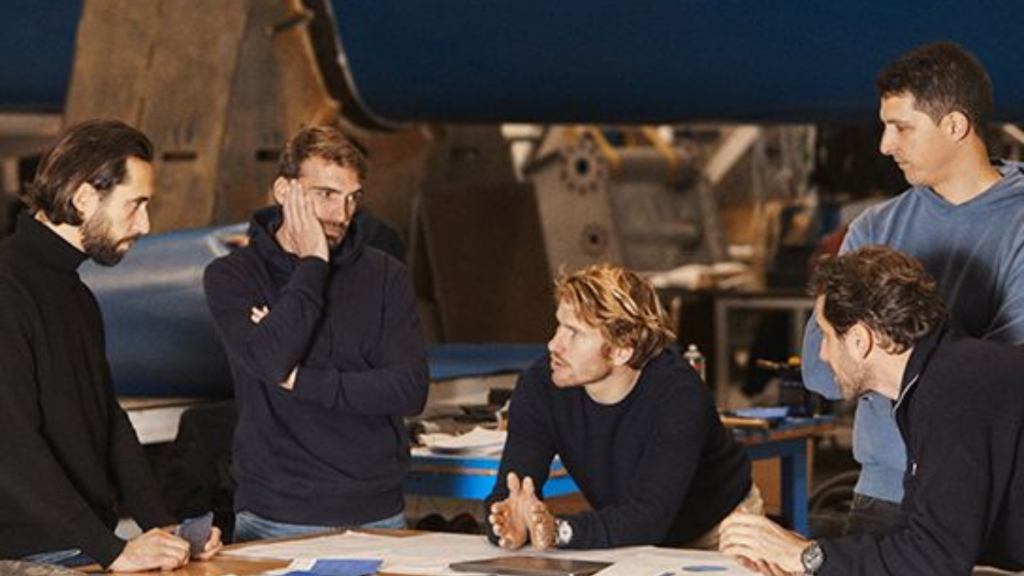
The result?
A trimaran capable of maintaining an average speed of 14 knots—on par with modern container ships—but powered solely by the wind. A true breakthrough in sustainable ocean freight. Designed to harness wind power from all directions, VELA ensures steady speed and minimal onboard energy consumption.
2. Enhanced Stability in an Unstable World
At 213 feet long and 82 feet wide, VELA’s trimaran design offers far greater stability than single-hull cargo ships :
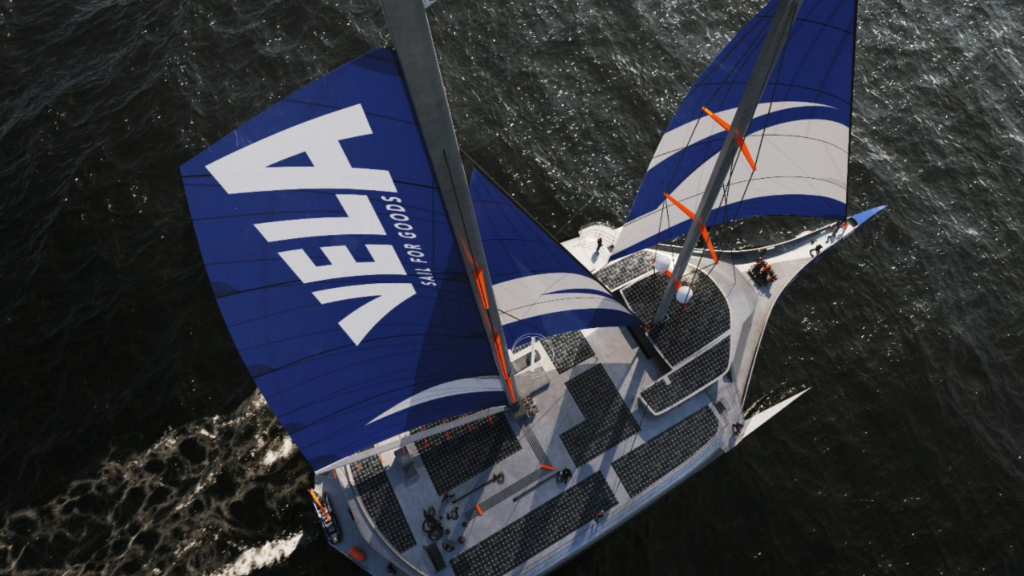
- Minimal heeling (only 10–20 degrees vs. the typical tilt of a monohull), ensuring comfort and safety for both crew and sensitive cargo.
- A wide, 82-foot work platform that streamlines maneuvering, speeds up loading/unloading, and keeps nearly all cargo on a single level.
- Greater resilience in rough seas.
3. High-Level Security Across the Entire Supply Chain
VELA is built to the highest standards of commercial shipping (Bureau Veritas certification, OMI conventions), ensuring safe navigation.
Each pallet is secured in monitored compartments, and our direct shipping routes—with no transshipment—reduce handling and risk.
Onboard sensors provide real-time tracking of transport conditions, ensuring total safety and traceability.
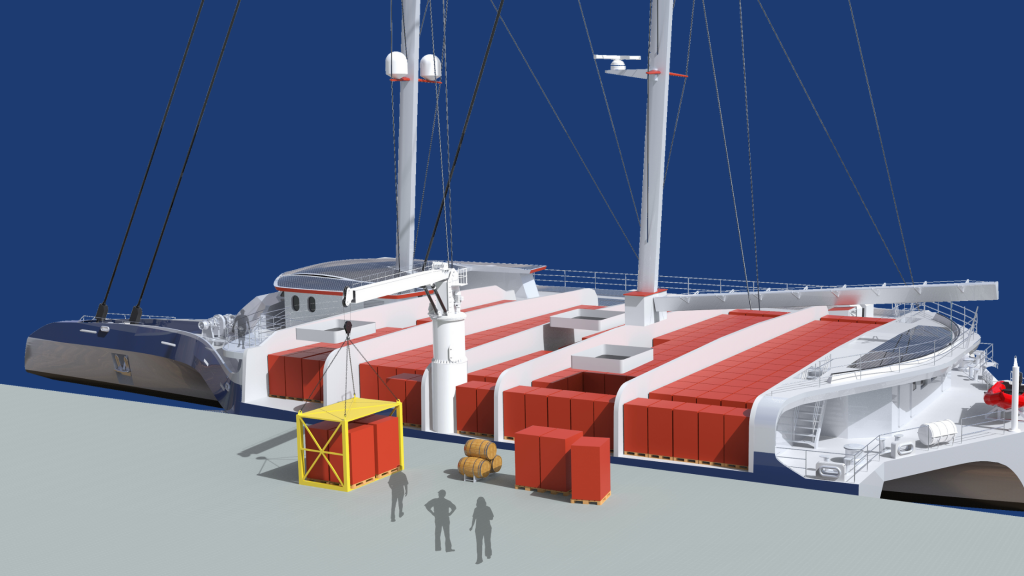
4. No Transport of Invasive Marine Species
Unlike conventional cargo ships that use ballast water to stabilize their load, the wind-powered VELA trimaran operates without ballast tanks. This eliminates the discharge of foreign water, drastically reducing the risk of spreading invasive species across oceans.
5. All-Weather Sailing Performance
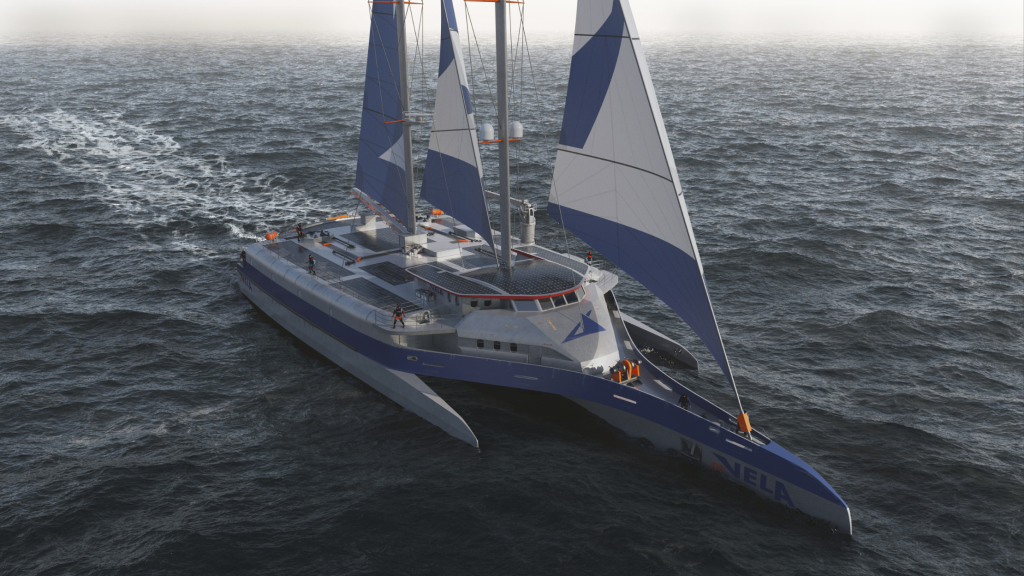
VELA delivers shipping speeds 2 to 4 times faster than conventional maritime freight. Its design ensures high sailing efficiency in both strong and light winds—where monohulls would have to reef.
Thanks to advanced weather routing developed with MerConcept, each crossing is optimized for speed, safety, and performance.
6. Decentralizing Global Freight Logistics
Today, only 20% of global cargo passes through secondary ports.
VELA was designed to access these underused ports and tap into their full potential. Less congested than major hubs, they offer shorter wait times and better cargo flow, helping to:
- Get closer to customers’ warehouses
- Ensure reliable and punctual ETA/ETD
- Shorten overland transport distances, reducing CO₂ emissions
- Streamline overall logistics operations
7. Sailing cargo ship : Radically Lower Carbon Emissions
VELA is currently the most decarbonized freight solution for transatlantic shipping. According to impact assessments (following l’ADEME and Smart Freight Centre),, VELA cuts carbon emissions by 96% compared to traditional container ships.
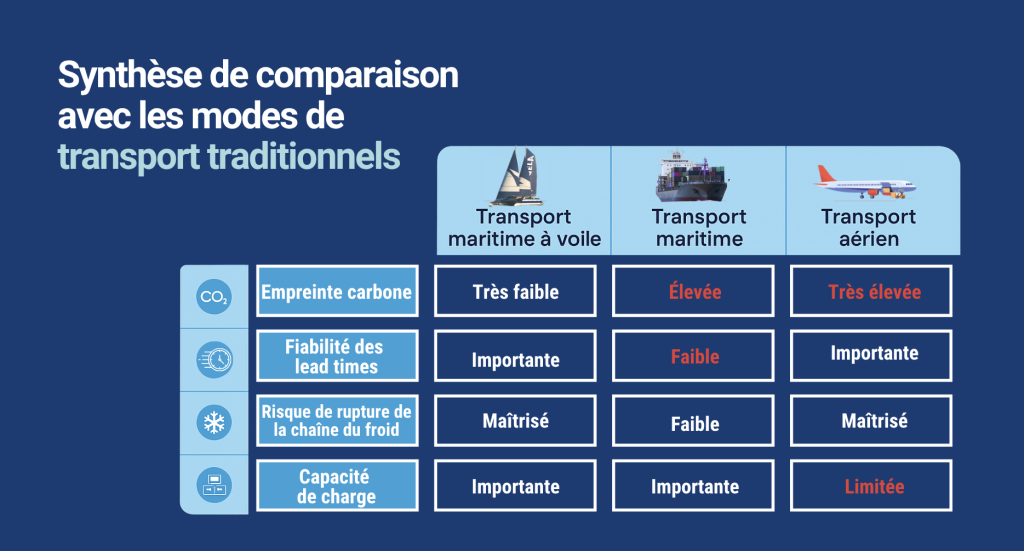
UA full life-cycle analysis—covering construction, use, and end-of-life—was conducted by the consulting firm Carbone 4, concluding :
« VELA’s climate impact is lower than any other known mode of transport on a North Atlantic route.»
Carbone 4

With 100% wind propulsion, VELA will ultimately carry up to 600 EU pallets per crossing, or up to 48,000 tons of low-carbon cargo shipped weekly to the U.S. in under 15 days.
The Sailing Cargo ship : A Real Answer for a Sustainable Future
VELA, the 100% wind-powered “airplane of the seas,” isn’t just a technical innovation—it’s a concrete solution to the climate, economic, and logistics challenges of maritime transport.
It proves that efficient, secure, and carbon-free freight is possible—starting today.
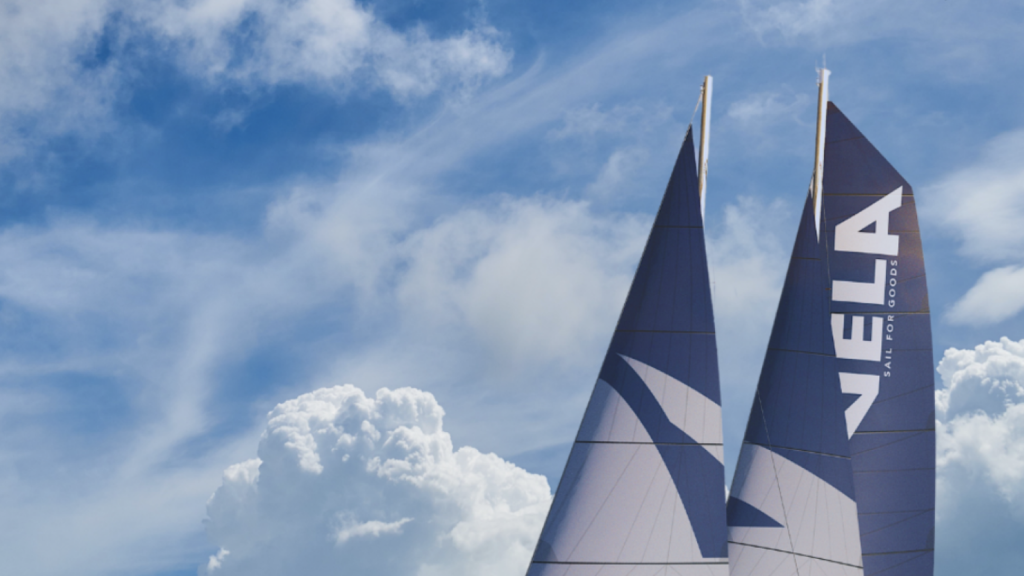
FAQ
Several historical factors explain their absence:
Polynesian trimarans remained unknown to the West until the 18th century.
Early materials like wood couldn’t produce strong, lightweight hulls at scale, making multihulls impractical for freight.
Traditional rigging lacked the power to unlock a trimaran’s full potential.
Only recently has offshore racing enabled major tech breakthroughs—composite materials, 3D modeling, weather routing, automation—that make high-performance sailing cargo viable.
Every pallet on VELA is monitored by onboard sensors, providing real-time data on location, temperature, and security for full visibility and traceability.
VELA is designed to transport a wide range of goods, tailored to each industry’s needs:
– Wine & spirits
– Pharmaceuticals & medical products
– Cosmetics
– Textiles
– Furniture
– Industrial goods & equipment
With a capacity of 600 EU pallets per crossing, VELA enables weekly deliveries of up to 48,000 tons of carbon-free cargo to the U.S. in under 15 days.
